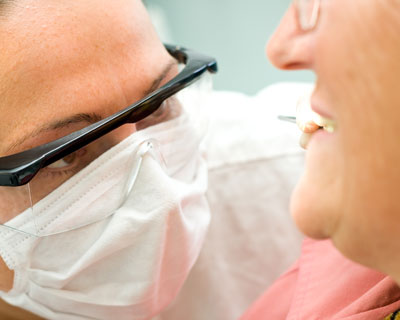Tooth Extractions
Prosthodontic Treatment
EXTRACTIONS OF THE TOOTH in XYZ
Having Your Teeth Pulled in Preparation for Dental Implants
For a variety of reasons, you and your dentist may determine that you require a tooth extraction. Some teeth are taken because they are extremely decaying; others are extracted because they have advanced periodontal disease or have broken in an unrepairable condition. Other teeth may need to be extracted due to their poor positioning in the mouth (such as impacted teeth) or as part of an orthodontic treatment plan. Single tooth extraction can cause issues with biting, jaw joint disorders, and teeth moving, all of which can significantly influence your oral health. In most circumstances, your dentist will explore alternatives to extractions and replace the extracted tooth to avoid these issues.

Call ### to learn more about tooth extractions or to arrange an appointment with XYZ in XYZ.
Process of Extraction
Before extracting it, the doctor will use a local anesthetic to numb your tooth, jaw bone, and surrounding gums. There will be a lot of pressure applied during the extraction. This is the result of firmly rocking the tooth to enlarge the socket in preparation for extraction. The pressure is felt without pain because the anesthetic has numbed the nerves; nonetheless, the nerves that transmit pressure are unaffected. Please let us know right away if you experience any pain during the extraction.
Sectioning a tooth
The teeth must be sectioned in certain cases. It is relatively typical to do this technique for teeth that are particularly well-anchored in their sockets and are curved, as this makes the extraction difficult. A dentist usually chops the tooth into pieces before picking each component apart.
After Tooth Extraction
A blood clot must develop after tooth extraction to stop bleeding and start healing. Immediately after the appointment, bite on a gauze pad for 30-45 minutes. If the bleeding or seeping continues, lay another gauze pad over the wound and bite firmly for another 30 minutes. You may have to repeat this process multiple times to stop the flow of blood.
It’s crucial not to disturb or dislodge the blood clot after it has formed. For the next 72 hours, avoid vigorous rinsing, sucking on straws, smoking, drinking alcohol, or brushing your teeth near the extraction site. These actions may cause the clot to detach or dissolve, causing the healing process to be hampered. For the next 24 hours, avoid intense exercise because it raises blood pressure and results in additional bleeding at the extraction site.
You may have some discomfort and swelling after the tooth is pulled. Swelling can be reduced by applying an ice pack or unopened frozen peas or corn bag to the affected area. Take your pain relievers exactly as directed. After 48 hours, the swelling typically goes down.
As advised, take pain medicine. If your medication isn’t working, please contact our office. Even if the signs and symptoms of infection have passed, continue to take antibiotics for the duration suggested. On the day before the extraction, drink plenty of water and eat a good, soft meal. As soon as you feel safe, you can resume normal eating.
It’s critical to get back to your regular dental routine after 24 hours. Brushing and flossing your teeth at least once a day should be part of this routine. This will hasten the healing process while also keeping your tongue fresh and clean.
You should be OK after a few days and able to resume your daily activities. Call our office right away if you have substantial bleeding, severe pain, or swelling that lasts longer than 2-3 days or if you have a response to the drug.
Are you ready to brighten up your smile?
Make an appointment with our office right away!